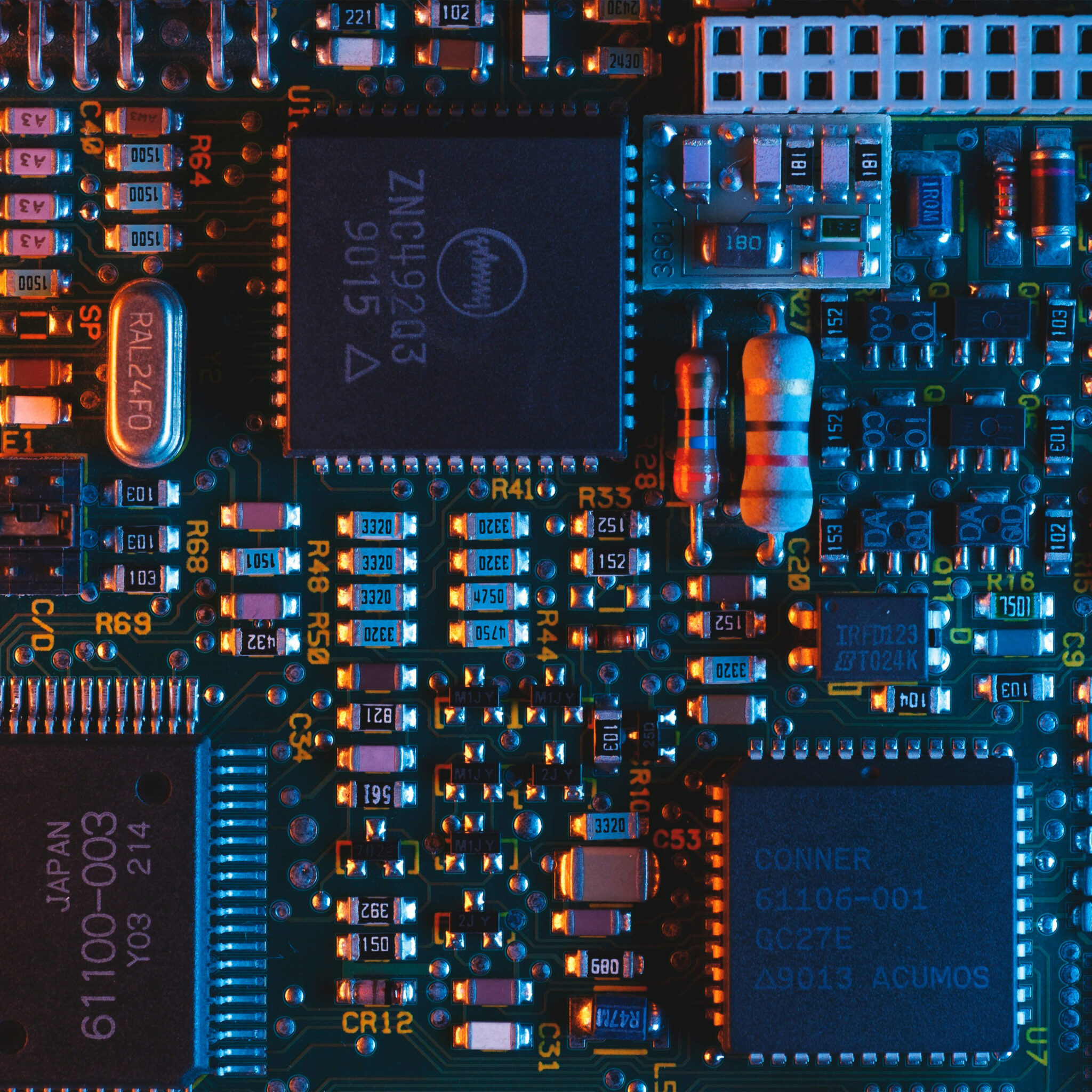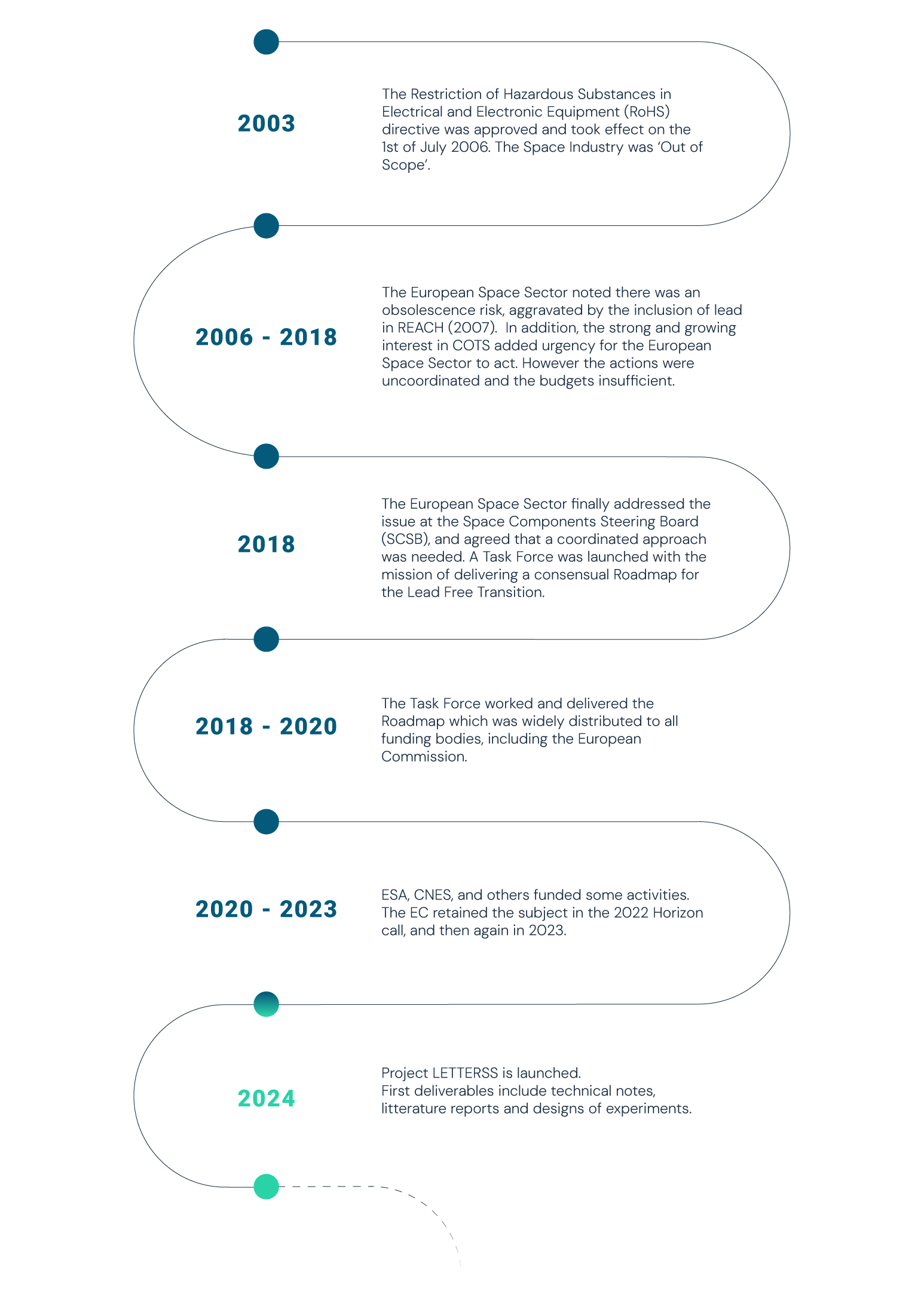
Our goal
Due to the overall transition of the Electronics industry worldwide to Pb-free, the Space Industry is more and more confronted with a situation where they cannot avoid using EEE (Electrical, Electronic and Electromechanical) parts with Lead-free finishes and they need to manage the associated risks.
Even though the Space Sector is exempted from RoHS restrictions (Restriction on the use of certain Hazardous Substances) and may also be given ample time to comply with future REACH restrictions, market pressure may result on potential supply isues for leaded solder paste.
This project addresses the main challenges of the Pb-free transition that were described in the Roadmap delivered in 2020 by the ESCC Task Force created to that end.
Utility
LETTERSS Project will make it easier for the European Space Sector to safely transition to Pb-free electronics without hindering the quality and reliability of their products. In addition it will facilitate the use of COTS components in space projects, lowering the cost of manufacturing of space electronics for commercial space mission and thereby boosting the competitiveness of European Space Industry.
By completing the Pb-free transition, the European Space Sector will also comply with European environmental regulations and thereby contribute to the Green Transition of their manufacturing units

3 pillars of the transition
Producing and using Commercial Off The Shelf (COTS) components with existing SnPb (tin-lead) assembly technologies.
Finding suitable replacements for SnPb (tin-lead) solder, current cornerstone of the Space Electrical Assembly for over 60 years.
Developing a better understanding of tin-whisker formation and growth.
REACH
LETTERSS Project is the space industry’s solution to comply with REACH. The Regulation on Registration, Evaluation, Authorisation and Restriction of Chemicals (REACH) applies to authorities and companies across the European Union, encouraging the safe use of chemicals and the phasing out of substances that might pose health or environmental risks. Under REACH more than 15 000 chemicals have been registered with the European Chemicals Agency, giving details of their effects on human health and the environment. Of those, more than 197 chemicals have been identified as ‘substances of very high concern’ – likely to face controls in future – 43 now require prior authorisation before use, and some 64 chemicals have been restricted.
The EU’s REACH regulation limits the use of potentially harmful chemicals to safeguard European citizens and the environment but also throws up challenges to Europe’s space industry.
Timeline

Horizon Europe
LETTERSS Project is funded by the Horizon Europe Programme: ‘Space technologies for European non-dependence and competitiveness’.
HORIZON-CL4-2021-SPACE-01 is the civil Space research and innovation programme of the EU. Its purpose is to support the evolution of the operational “EU Space Programme” components and to foster the competitiveness of the European Space sector as a whole.
Projects are expected to contribute to the following outcomes:
- To reduce the dependence on critical technologies and capabilities from outside Europe for future space applications.
- To develop or regain in the mid-term the European capacity to operate independently in space.
- To enhance the technical capabilities and overall competitiveness of European space industry vendors on the worldwide market.
- To open new competition opportunities for European manufacturers by reducing dependency on export restricted technologies that are of strategic importance to future European space efforts.
- To improve the overall European space technology landscape and complement and/or create synergy with activities of European and national programmes either in the space or non-space fields.
